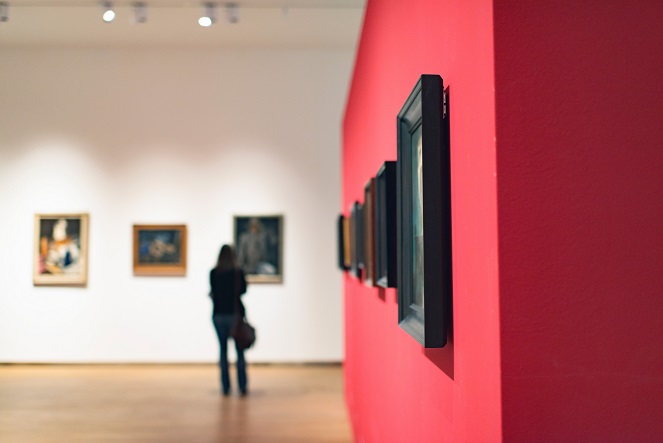A New York state law mandating museums to label art which was stolen or forcibly put up for sale by Nazis may face a constitutional challenge.
World Israel News Staff
Art museums in New York State are now required by law to label pieces which were stolen by the Nazi regime in the 1930s and 1940s.
The new law also mandates that owners of works of art which are known to have been stolen by the Nazi government to register the art pieces with the Art Loss Register.
New York Governor Kathy Hochul signed the bill into law last month, after it was passed unanimously by both chambers of the state legislature.
The bill’s sponsor, State Senator Anna Kaplan (D), said the law’s function is primarily educational, and is aimed at the museum-going public.
“During the Holocaust, some 600,000 paintings were stolen from Jewish people not only for their value, but to wipe our culture and identity off the face of the Earth,” Kaplan said in a statement.
“Today, artwork previously stolen by the Nazis can be found hanging in museums around New York with no recognition of the dark paths they traveled there.”
“With the history of the Holocaust being so important to pass on to the next generation, it’s vital that we be transparent and ensure that anyone viewing artwork stolen by the Nazis understand where it came from and its role in history.”
While the innocuous, one-paragraph bill appears largely symbolic – lacking any enforcement mechanism – some jurists say the law violates the First Amendment’s free speech clause, and could face legal challenges.
“One way of framing the law is that it’s an incursion into the museum’s artistic decisions,” Santa Clara University School of Law professor Eric Goldman told The Forward. “It tells a museum how they must present their art and that has implications for the museum’s ability to speak, to make its own artistic statement.”
Goldman added that the legislation could be defended in court on the grounds that it merely mandates transparency on the ownership history of artworks.
But other experts were more explicit in their criticism of the law.
“I don’t think it’s constitutional,” Rebecca Tushnet, a First Amendment professor at Harvard Law School, said.
“The government needs a really good reason to stop you from speaking in the way you want and to require you to say something that you would rather not say. And if you’re not a commercial seller, then it’s very rare that there’d be a good enough reason.”
Others noted that the law appears largely symbolic, with clear loopholes allowing museums to sidestep the regulation – and avoid the need for legal challenges.
The law itself limits the requirement to place a label by the artwork “to the extent practicable”, Northern Kentucky University law professor and Holocaust restitution expert Jennifer Kreder pointed out.


